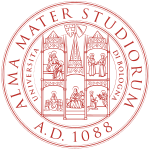
Back تاريخ الجامعات البحثية الأوروبية Arabic Historia de las universidades de investigación europeas Spanish Histoire des universités européennes French История западноевропейского университета Russian 歐洲研究型大學發展史 Chinese

European universities date from the founding of the University of Bologna in 1088 or the University of Paris (c. 1150–70). The original medieval universities arose from the Roman Catholic Church schools. Their purposes included training professionals, scientific investigation, improving society, and teaching critical thinking and research. External influences, such as Renaissance humanism (c. mid-14th century), the discovery of the New World (1492), the Protestant Reformation (1517), the Age of Enlightenment (18th century), and the recurrence of political revolution, enhanced the importance of human rights and international law in the university curricula.
In the 19th and 20th centuries, European universities concentrated upon science and research, their structures and philosophies having shaped the contemporary university. The French Ecole Polytechnique was established in 1794 by the mathematician Gaspard Monge during the Revolution, and it became a military academy under Napoleon I in 1804. The German university — the Humboldtian model — established by Wilhelm von Humboldt was based upon Friedrich Schleiermacher's liberal ideas about the importance of freedom, seminars, and laboratories, which, like the French university model, involved strict discipline and control of every aspect of the university. In the 19th and 20th centuries, the universities concentrated upon science, but were not open to the general populace until after 1914. Moreover, until the end of the 19th century, religion exerted a significant, limiting influence upon academic curricula and research, by when the German university model had become the world standard. Elsewhere, the British also had established universities world-wide, thus making higher education available to the world's populaces.

© MMXXIII Rich X Search. We shall prevail. All rights reserved. Rich X Search